Wound Closure Biomaterials
1/71
There's no tags or description
Looks like no tags are added yet.
Name | Mastery | Learn | Test | Matching | Spaced |
|---|
No study sessions yet.
72 Terms
What are the 4 factors to consider when selecting sutures?
healing characteristics of the tissue
condition of the wound = infection, inflammation, blood supply
condition of the patient (affects the healing process) = age, systemic disease, immune status, nutrition
other risk factors = exp. chemo alters wound healing
what are the 3 types of wound closure materials?
sutures
staples
tissue adhesives
what would be the IDEAL suture material?
high initial tensile strength but totally biodegradable at the predictable rate
bioinert
good handling characterisitcs, strong, supple, lack of memory
absolute knot security without loss of strength at the knot
inexpensive and easily sterilized
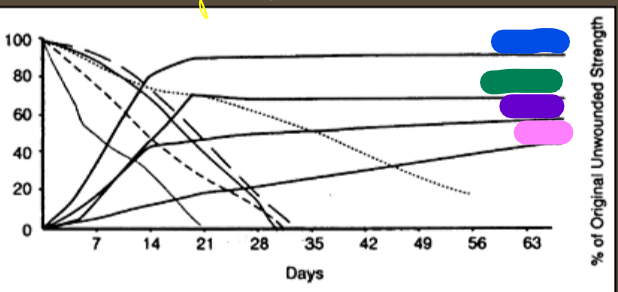
what is the tissue in the blue box?
bladder

what is the tissue in the green box?
stomach
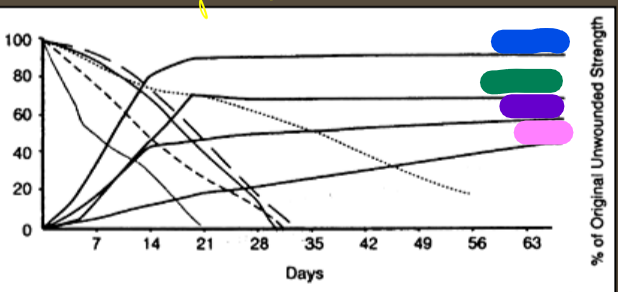
what is the tissue at the purple box?
colon
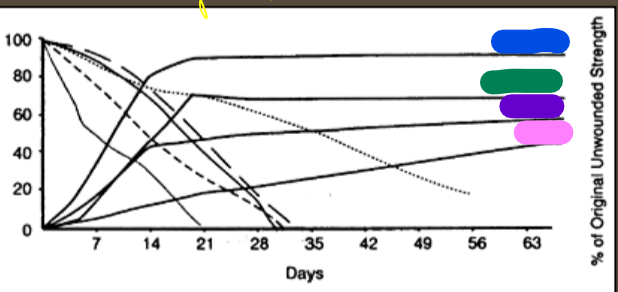
what tis the tissue at the pink box?
skin
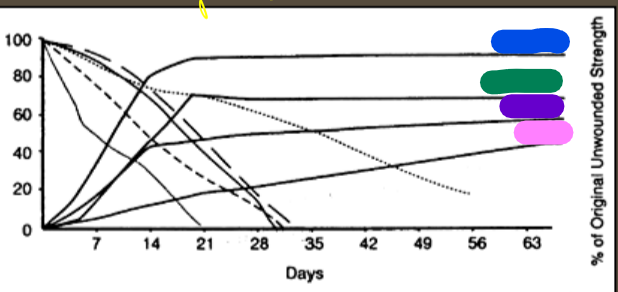
what to the lines to the far left represent?
different suture materials and the loss of its strength over time
what tissue regains FULL pre-injury strength once healed?
bladder
refers to the strength of the suture and its ability to hold wound edges in apposition
tensile strength of sutures
refers to the time needed for the body to absorb or dissolve the suture material
absorption
as absorption occurs, ________ will diminish over time
the tensile strength of sutures
How do suture material sizes work?
the larger the number, the smaller the suture
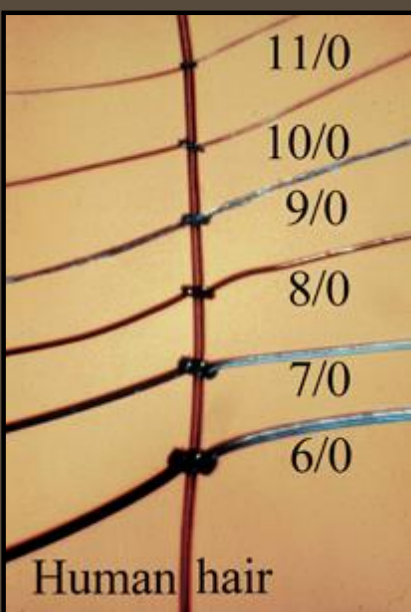
T/F = nonabsorbable suture retains tensile strength for longer than 60 days
true
undergoes degradation and rapid loss of tensile strength within 60 days
absorbable suture
what are the 3 types of suture structure?
monofilament
woven - braided
twisted

why is monofilament preferred over woven or twisted?
it slides through tissues and doesn’t have tissue drag
what is another term for tissue drag?
chatter

what is this picture showing?
sutures have memory which causes them to retain the way they were packaged
what are the two natural absorbable sutures?
catgut
collagen = no one uses this however
what is catgut made of?
sheep small intestinal submucosa or cattle serosa
what is capillary action?
when sutures suck up and retain fluids, can be a risk of infection
what type of suture structure is catgut?
twisted multifilament
how is catgut absorbed?
phagocytosis and the rate is unpredictable
what two forms of catgut are available?
plain
chromic = coated so takes longer to be absorbed
mild
medium
heavy
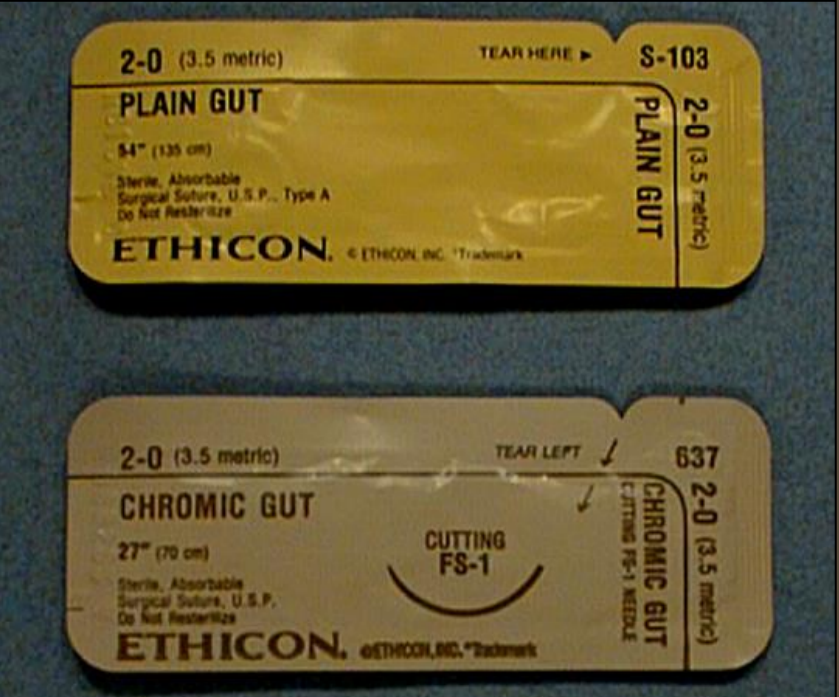
what are the options for multifilament synthetic absorbable sutures?
polyglactin 910 = vicryl
polyglycolic acid = dexon II
glycolide/lactide copolymer - polysorb
what are the options for monofilament synthetic absorbable suture?
polydioxanone - PDS II
polyglyconate - Maxon
poliglecaprone 25 - monocryl
glycomer 631 - biosyn
polyglytone 6211 - caprosyn
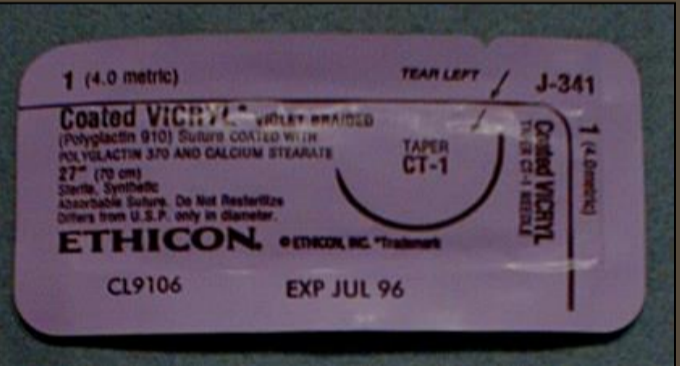
polyglactin 910 (vicryl)
braided multifilament
absorbed by hydrolysis - by 70 days
maintains adequate tensile strength for 14 days (65%) to 21 (40%) days
high coefficient of friction - coating attempts to minimize drag
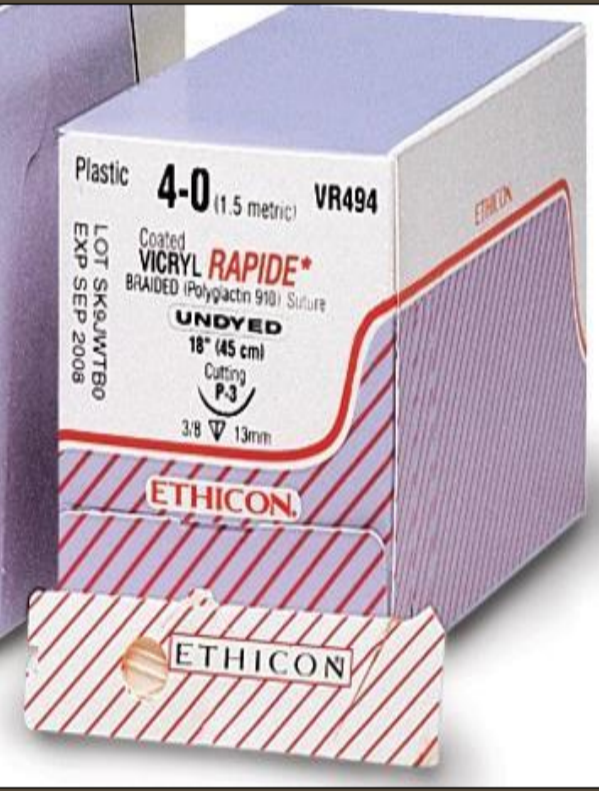
polyglactin 910 - vicryl rapide
maintains adequate tensile strength for wound support less than 14 days
used when fast absorption is advantageous
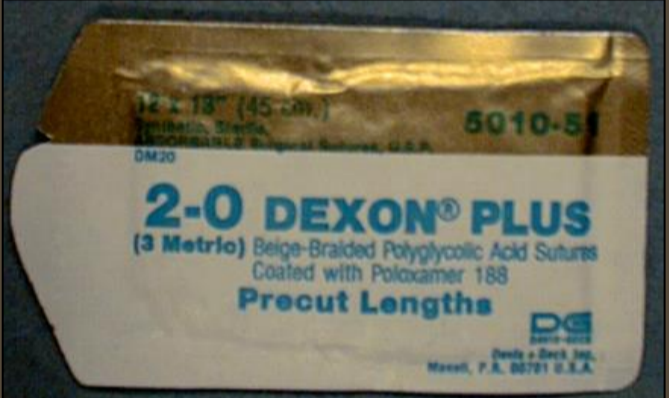
polygycolic acid - dexon II
braided multifilament
absorbed by hydrolysis - enhanced in alkaline environment
maintains adequate tensile strength for 14 days (65%) to 21 (35%) days
complete absorption 90 to 120 days
high coefficient of friction - tissue drag (chatter)
what is the equivalent to vicryl?
dexon II
polysorb
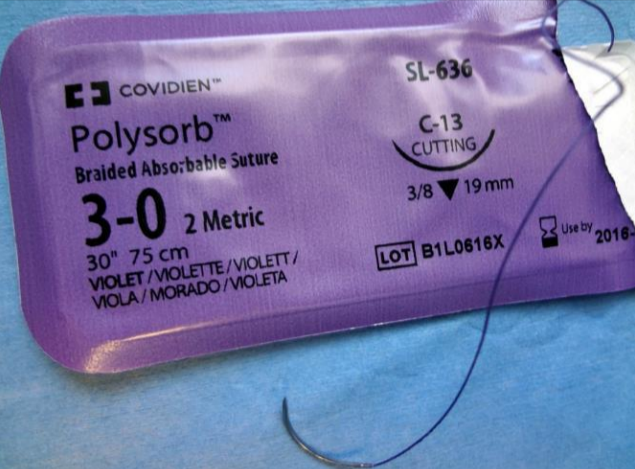
glycolide/lactide - polysorb
braided multifilament
absorbed by hydrolysis - complete absorption takes 56 to 70 days
maintains approximately 80% tensile strength at 14 days
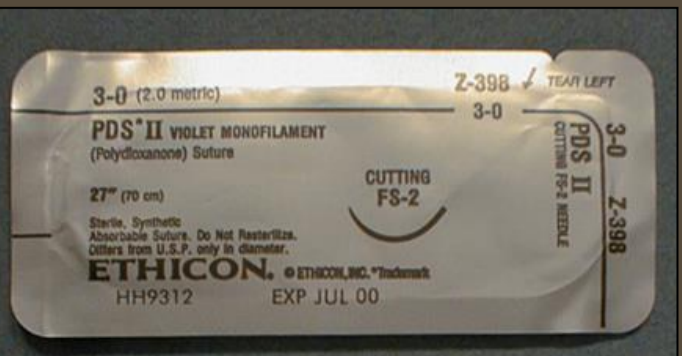
polydioxanone - PDS II
monofilament
absorbed by hydrolysis - complete by 6 months
maintains 69% of tensile strength at 42 days - adequate wound support for about 6 weeks
tends to kink when used for continuous patterns
used for long-term support (fascia healing)
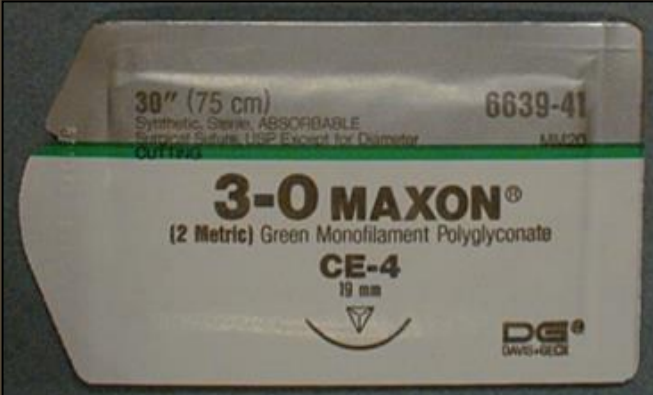
polyglyconate - maxon
monofilament
absorbed by hydrolysis - complete at approximately 180 days
maintains 55% of tensile strength at 21 days
handling characteristics similar to PDS
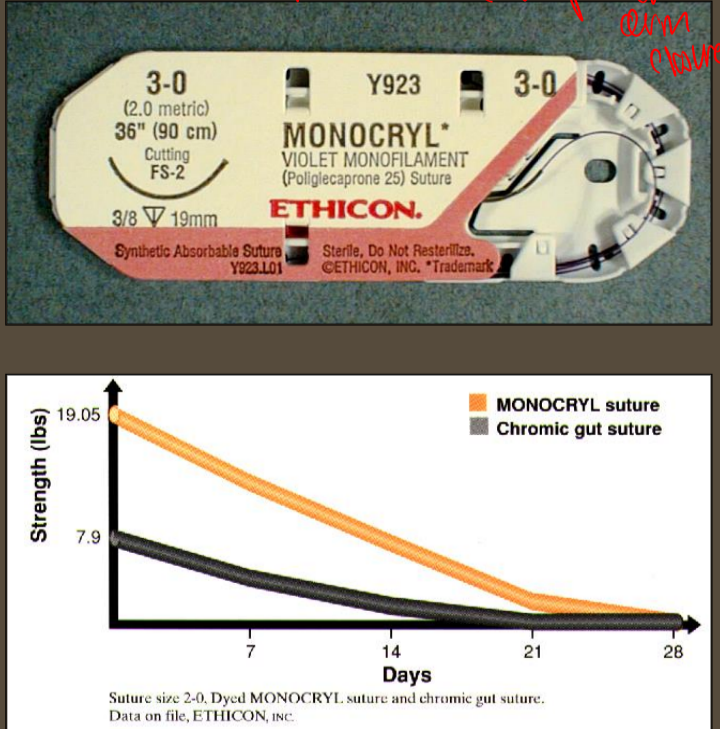
poliglecaprone 25 - monocryl
monofilament
absorbed by hydrolysis
rapid loss of tensile strength = 80% lost by 14 days
but complete absorption takes up to 120 days
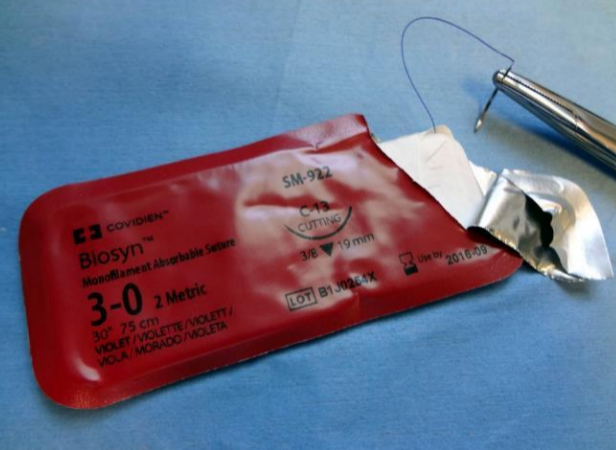
glycomer 631 - biosyn
monofilament
absorbed by hydrolysis
complete absorption takes 90-180 days
maintains 75% tensile strength at 14 days
what suture is the equivalent to monocryl?
biosyn
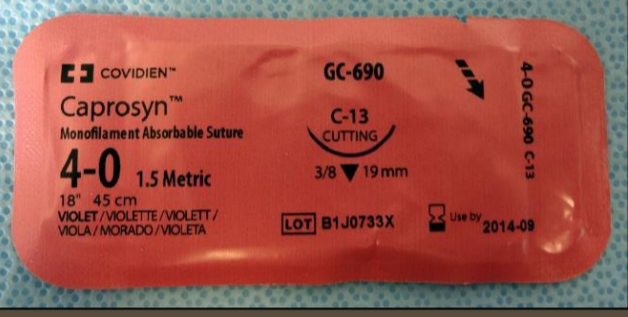
polyglytone 6211 - caprosyn
monofilament
absorbed by hydrolysis
absorption complete at 56 days
tensile strength
50-60% @ 5 days
20-30% @ 10 days
0 tensile strength @ 21 days
what suture is particular good for oral surgeries?
polyglytone 6211- caprosyn
what are antibacterial sutures?
suture material that has antibacterial properties incorporated into them
do antibacterial sutures really make a difference in post op infections?
mixed research results
what are the two types of antibacterial used in the antibacterial sutures?
triclosan
chlorhexidine diacetate
what are the materials for natural nonabsorbable sutures?
silk
cotton
stainless steel
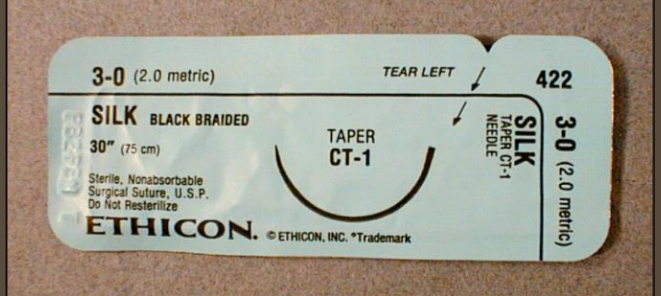
silk
braided or twisted multifilament
coated to reduce capillarity and friction
slowly loses tensile strength - phagocytosis over time
excellent handling, but can potentiate infection
what is silk suture used for in particular?
vasculature surgeries like PDAs
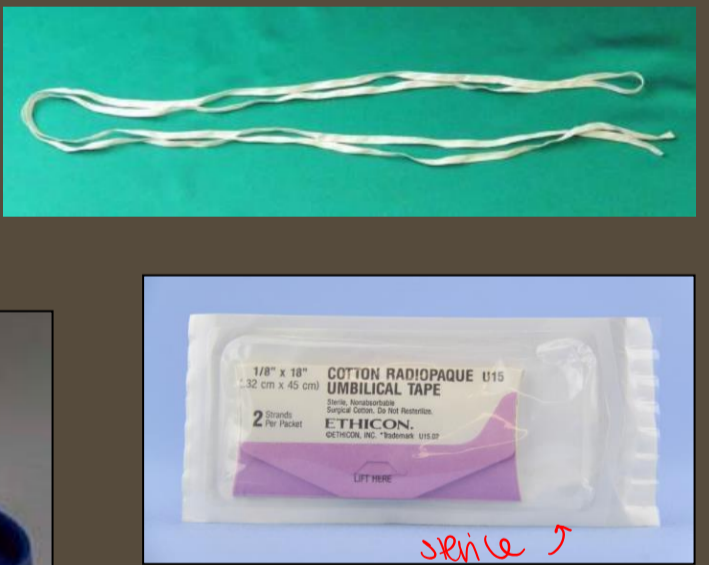
cotton
used for lacing for tie-over bandages
what is the most common product used product of cotton suture?
umbilical tape
what two forms does stainless steel come in?
suture
staples
stainless steel suture
monofilament or multifilament
highest tensile strength
absolute knot security
biologically inert
poor handling characteristics
tends to cycle and break over time
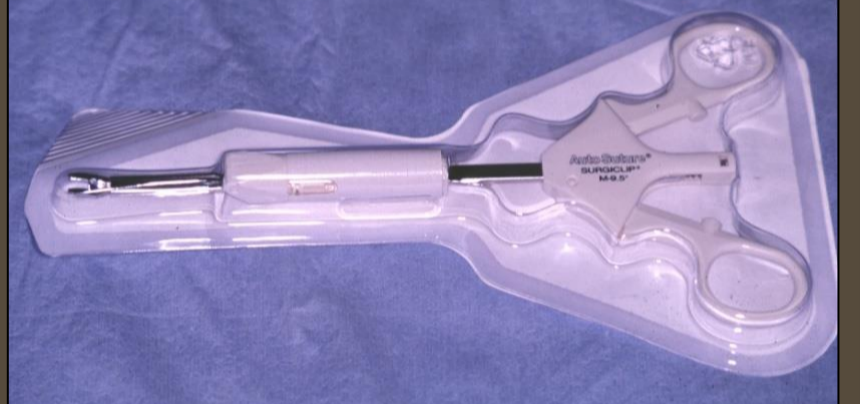
what are these called?
vascular clips = surgiclips
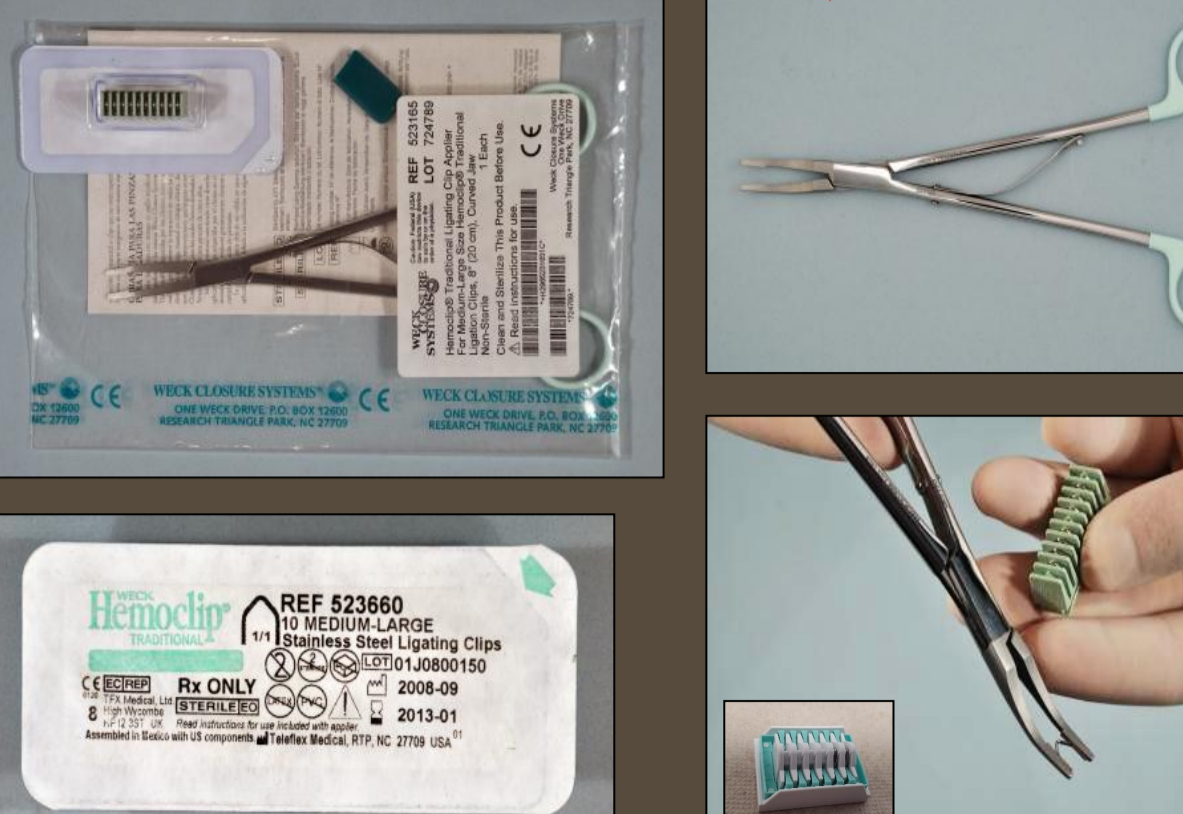
what are these called?
vascular clips = hemoclips
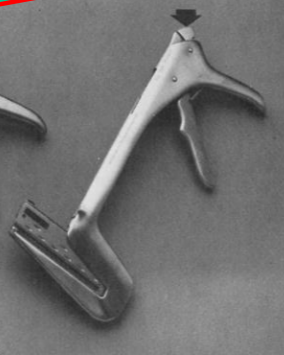
what is this?
thoracoabdominal stapler = TA
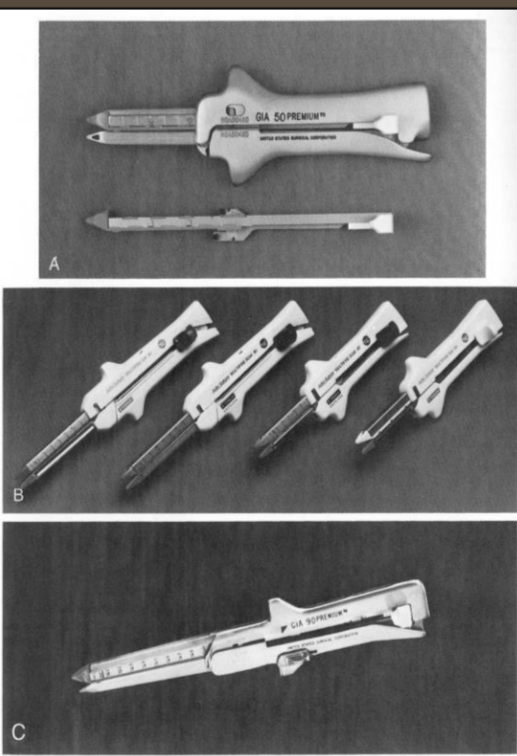
what is this?
gastrointestinal anastomosis = GIA
what are the options for synthetic nonabsorbable sutures?
nylon
polypropylene
polybutester
polymerized caprolactam
polyester
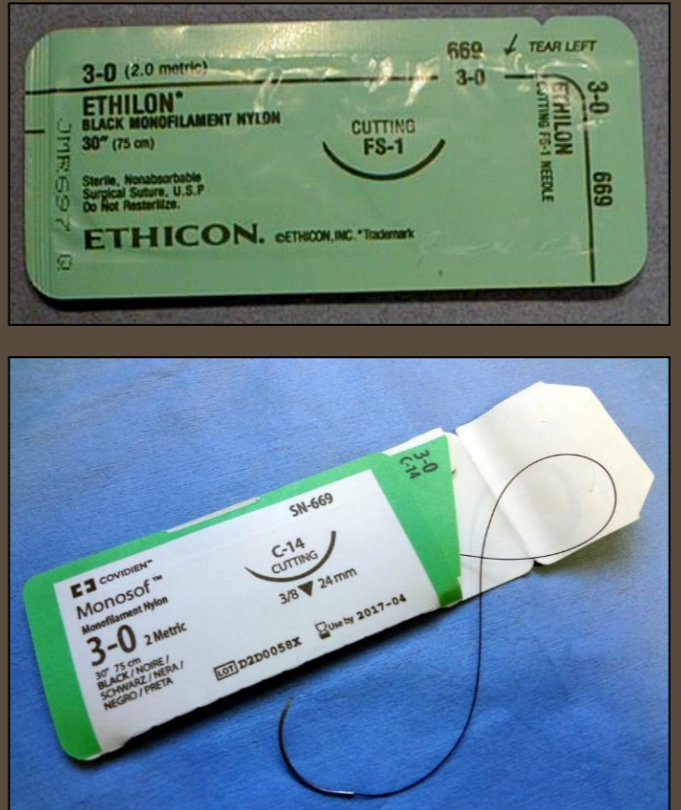
nylon = ethilon, monosof, fluorescent supramid
monofilament
loses 30% tensile strength over 2 years

polypropylene = Prolene, Surgipro, Propylglo
monofilament
high tensile strength
maintains strength indefinitely - used where longevity is important
minimally thrombogenic
where is polypropylene used?
herniorrhaphy and cardiovascular sx

polybutester = Novafil
monofilament
maintains tensile strength
excellent knot security
elasticity
eventually degraded but last longer than nylon
what is polybutester particularly good for?
because of its elasticity, excellent as a derm closure as it will stretch as skin swells
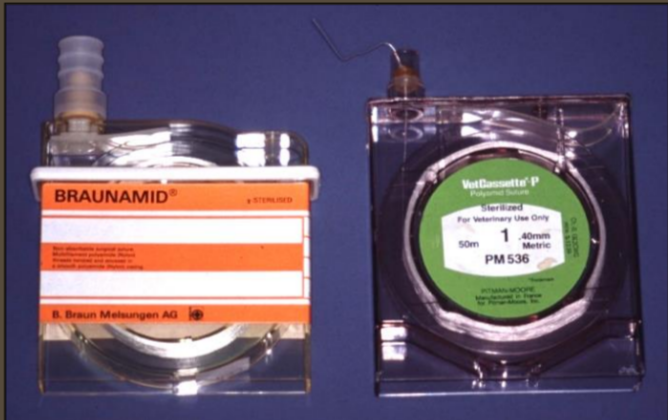
polymerized caprolactam = Supramid, Braunamid
twisted multifilament with coating
individual packages or bulk reel
coating has a tendency to crack - particularly if autoclaved
greater tissue reactivity than other nonabsorbables
not commonly used
polyester - Ethibond, Ti-Cron, Mersilene
braided multifilament
excellent tensile strength
not degraded
poor handling characteristics
poor knot security
high coefficient of friction unless coated
high tissue reactivity - FB activity = can create festering suture
no used in vet med much
open suture material _______ prior to use
immediately
T/F it is good to allow buried materials to contact skin
FALSE
do NOT allow buried materials to contact skin
handle suture _____ to prevent iatrogenic damage
gently
do not grasp suture with ______
instruments - unless the part that will be cut off
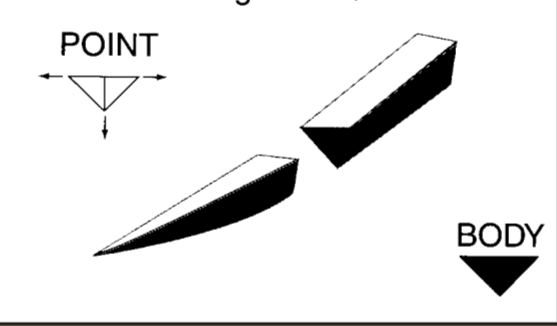
what is this type of needle called?
reverse cutting needle
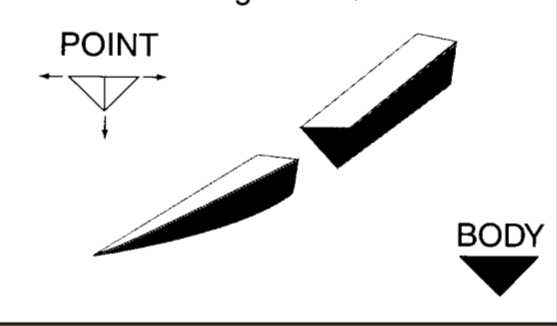
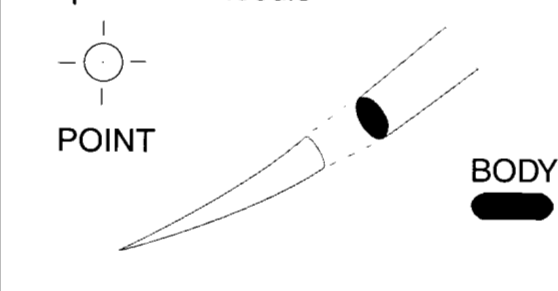
what type of needle is this called?
taper point needle
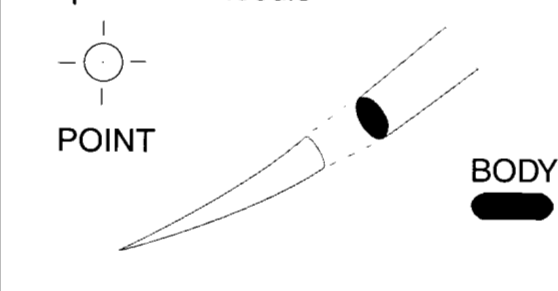
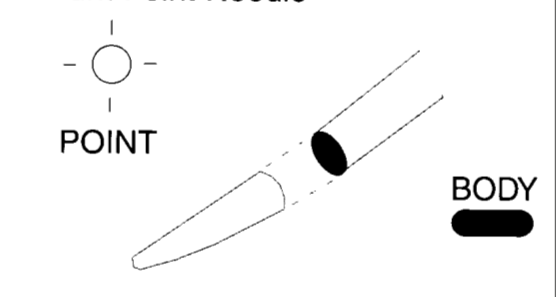
what type of needle is this called?
blunt point needle
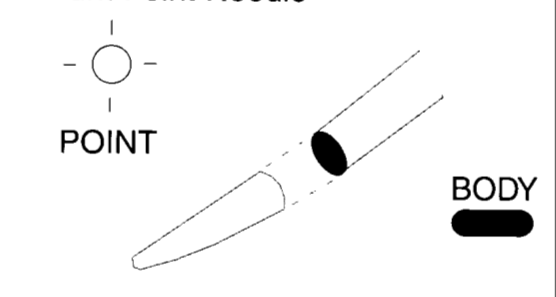
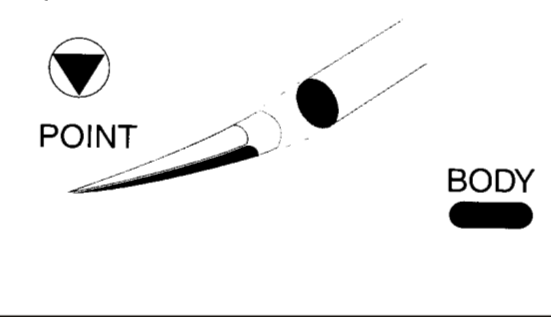
what type of needle is this called?
tapercut needle
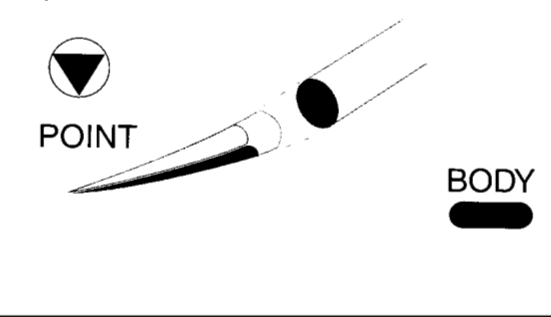
what is the most common tissue adhesives?
cyanoacrylates
what type of reaction occurs if tissue adhesives enters into wound inside of topical application?
foreign body reaction
are tissue adhesives sterile?
no